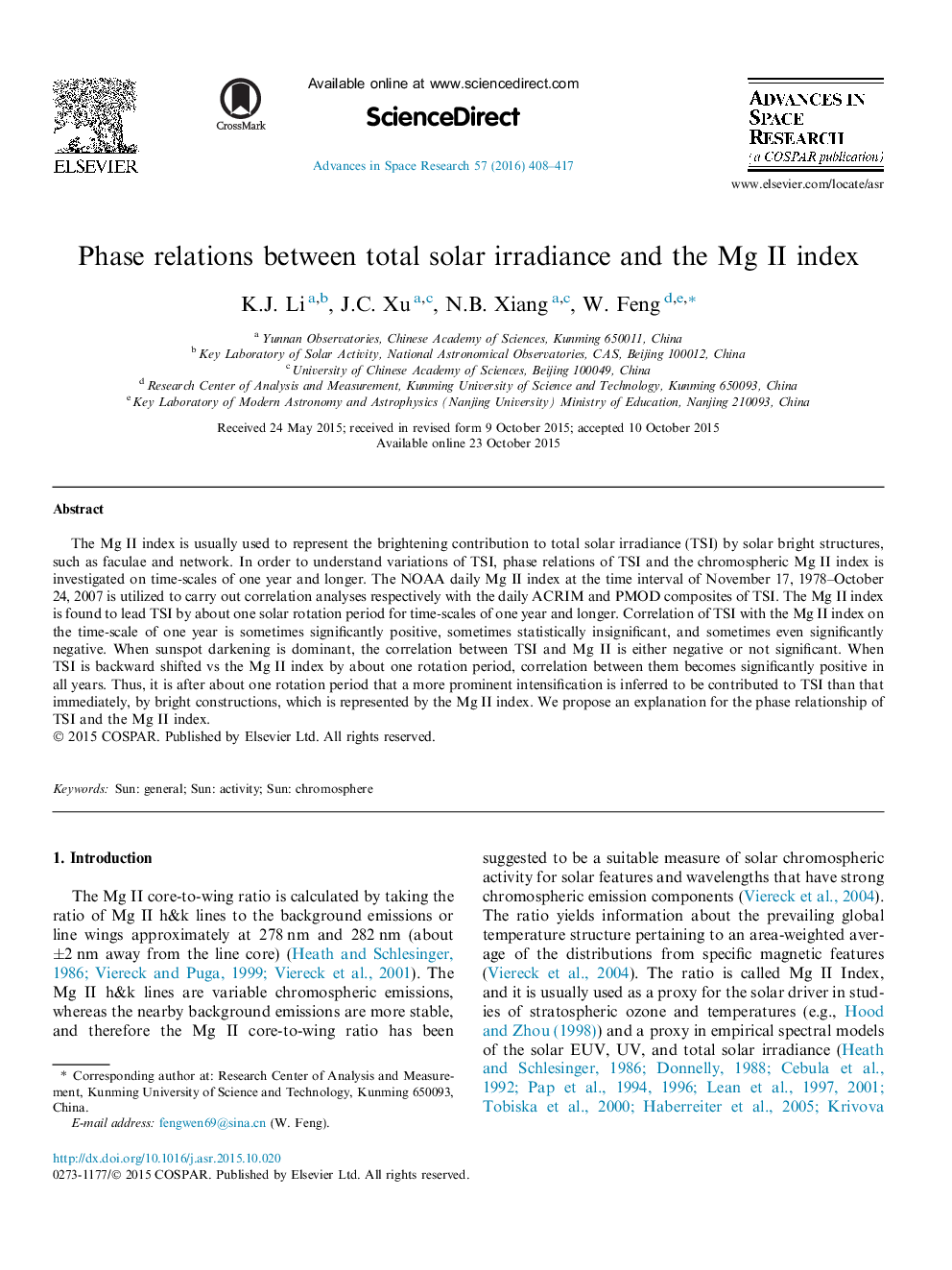| Article ID | Journal | Published Year | Pages | File Type |
|---|---|---|---|---|
| 1763964 | Advances in Space Research | 2016 | 10 Pages |
Abstract
The Mg II index is usually used to represent the brightening contribution to total solar irradiance (TSI) by solar bright structures, such as faculae and network. In order to understand variations of TSI, phase relations of TSI and the chromospheric Mg II index is investigated on time-scales of one year and longer. The NOAA daily Mg II index at the time interval of November 17, 1978-October 24, 2007 is utilized to carry out correlation analyses respectively with the daily ACRIM and PMOD composites of TSI. The Mg II index is found to lead TSI by about one solar rotation period for time-scales of one year and longer. Correlation of TSI with the Mg II index on the time-scale of one year is sometimes significantly positive, sometimes statistically insignificant, and sometimes even significantly negative. When sunspot darkening is dominant, the correlation between TSI and Mg II is either negative or not significant. When TSI is backward shifted vs the Mg II index by about one rotation period, correlation between them becomes significantly positive in all years. Thus, it is after about one rotation period that a more prominent intensification is inferred to be contributed to TSI than that immediately, by bright constructions, which is represented by the Mg II index. We propose an explanation for the phase relationship of TSI and the Mg II index.
Related Topics
Physical Sciences and Engineering
Earth and Planetary Sciences
Space and Planetary Science
Authors
K.J. Li, J.C. Xu, N.B. Xiang, W. Feng,
